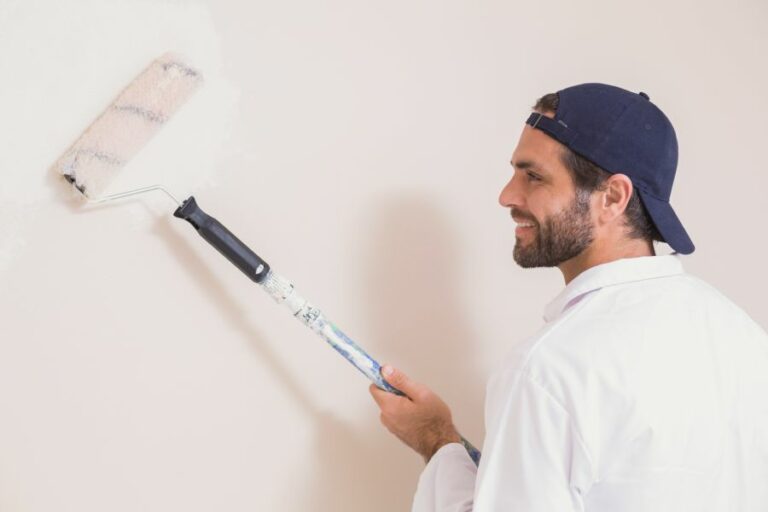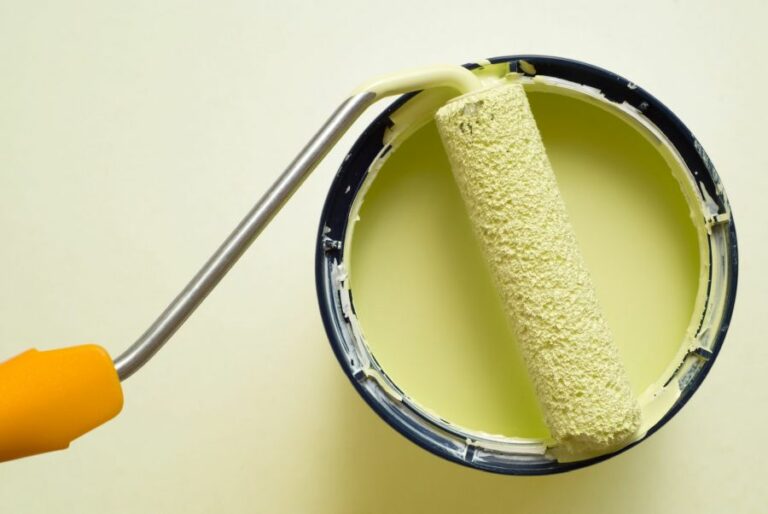Outdoor Paint For Sheds, 25 Things You Should Know
Welcome to the ultimate guide to outdoor paint for sheds! Explore the best options to protect and upgrade your beloved backyard sanctuary. Whether you’re looking to revive an older shed or add a splash of creativity to a new one, I’ll help you navigate through the vast array of paint colors, types, and finishes that withstand the test of time and weather conditions.
Outdoor paint for sheds:
Selecting the right outdoor paint for your shed is crucial for its durability and visual appeal. Consider factors such as durability, weather resistance, paint type, color, and finish. Top recommendations include Behr Premium Plus Exterior Paint and Primer, Rust-Oleum Painter’s Touch Ultra Cover 2X, and KILZ Exterior Siding, Fence, and Barn Paint. Proper surface preparation, priming, and painting techniques are essential for the best results.

Discover the best outdoor paints for sheds, including top-performing products and expert advice on selecting the perfect finish. Learn about durability, color options, and essential preparation tips to ensure your shed looks great and lasts for years. Dive in and transform your shed today!
Contents
- 1 Exterior Paint for Garden Sheds
- 2 What is the Optimal Paint Choice for Exterior Shed Surfaces?
- 3 Is it Appropriate to Utilize Exterior Paint on a Shed?
- 4 What is the process for painting the aged exterior storage shed?
- 5 Is Painting a Shed a Beneficial Decision?
Exterior Paint for Garden Sheds
A well-chosen and properly-applied outdoor paint can add years to the life of your garden shed, enhancing its durability, improving its visual appeal, and protecting it from the elements. With a plethora of options available in the market, choosing the right paint can be quite a task.
• Factors to Consider when Choosing Outdoor Paint for Sheds
When selecting outdoor paint for your shed, there are several factors that you should consider in order to get the best results. These include:
– Durability and Weather Resistance
High-quality paint should be able to withstand fluctuating temperatures, humidity, and direct sunlight without cracking, peeling, or fading. The paint you select should be specifically designed for outdoor use, providing enhanced protection against water, molds, and mildew.
– Type of Paint
There are two main types of outdoor paint on the market: water-based paints (also known as latex or acrylic paints) and oil-based paints. Each type has its own set of advantages and disadvantages.
Water-Based Paints
Water-based paints are generally easier to apply and clean up, as they can be thinned and cleaned with water. They dry relatively quickly and have low levels of toxic fumes. However, they may not be as durable or weather-resistant as oil-based paints.
Oil-Based Paints
Oil-based paints offer better adhesion, durability, and weather resistance compared to water-based paints. They are suitable for surfaces that are exposed to heavy wear and tear, such as shed floors.
However, they tend to dry slowly, emit strong fumes, and require the use of mineral spirits for thinning and cleanup.
– Color and Finish
The choice of color and finish will largely depend on your preference and your shed’s intended function. Lighter colors will reflect more sunlight and help keep your shed’s interior cooler.
A semi-gloss or gloss finish will provide better resistance to dirt and moisture, while a matte or flat finish can help hide imperfections on the surface of your shed.
• Top Outdoor Paints for Sheds
Based on the factors discussed above, here are some paint options that I recommend for outdoor sheds:
1. Behr Premium Plus Exterior Paint and Primer
A water-based paint with excellent durability and weather resistance, Behr Premium Plus Exterior Paint and Primer is an excellent choice for your shed. It provides a mildew-resistant coating and doesn’t require any separate primer application, saving you time and effort.
This paint is available in a variety of colors and finishes.
2. Rust-Oleum Painter’s Touch Ultra Cover 2X
Rust-Oleum Painter’s Touch Ultra Cover 2X is an oil-based paint that provides excellent coverage and long-lasting protection against wear and tear. It is ideal for sheds that experience a lot of foot traffic, such as those used as workshops.
The paint is available in a variety of colors and finishes, including gloss, semi-gloss, and satin.
– 3. KILZ Exterior Siding, Fence, and Barn Paint
A durable, water-based paint designed for outdoor surfaces, KILZ Exterior Siding, Fence, and Barn Paint, offers excellent protection against the elements, including UV light.
This paint is suitable for various surfaces, such as wood, masonry, and primed metal among others, and is available in two finishes: satin and flat.
• Tips for Applying Outdoor Paint to Your Shed
Once you have chosen the right paint for your shed, follow these tips for the best results:
1. Prepare the Surface
Before applying paint, thoroughly clean the shed’s surface to remove any dirt, debris, or loose paint. Use a pressure washer, scraper, or wire brush to get rid of any stubborn dirt or peeling paint. Repair any damage, cracks, or holes with a suitable filler if necessary.
2. Prime the Surface
While some paints come with built-in primers, applying a separate primer to ensure better adhesion and even coverage is always a good idea. Use a primer that is compatible with your chosen paint and follow the manufacturer’s instructions for proper application.
3. Choose the Right Weather Conditions
Paint your shed in dry, mild weather conditions to achieve the best results. Extreme temperatures, high humidity, or rain can affect the drying and adhesion of the paint.
4. Use Proper Tools and Techniques
Use high-quality brushes, rollers, or sprayers for uniform application of paint. Be sure to follow the paint manufacturer’s guidelines for proper coverage and number of coats. Allow each layer of paint to dry completely before applying the next layer.
• Conclusion
Choosing the right outdoor paint for your shed and applying it correctly can significantly improve its aesthetic appeal and durability. Consider factors such as durability, weather resistance, and paint type when choosing.
By following the tips provided in this article, you can protect and enhance the lifespan of your shed while giving it a fresh new look. Happy painting!
What is the Optimal Paint Choice for Exterior Shed Surfaces?
When it comes to protecting and enhancing the appearance of your outdoor shed, choosing the right paint is a crucial decision. Not only does it need to look good, but it also must provide the necessary protection against weather and other external factors.
• Types of Paint for Outdoor Sheds
There are three main types of paint that work well for outdoor sheds – water-based, oil-based, and exterior-grade paint. Each type has its strengths and weaknesses, so determining the best one for you depends on your requirements and preferences.
– Water-based Paint
Water-based paint, also known as latex or acrylic paint, is an excellent choice for outdoor sheds due to its ease of application, fast drying time, and low odor. It is also resistant to fading and chalking, ensuring your shed retains its color for longer.
A great advantage of water-based paint is its easy cleanup with soap and water, making it more convenient for DIY projects. However, it may not be as durable as oil-based paint, especially in areas with high humidity or frequent temperature fluctuations.
– Oil-based Paint
Oil-based paint, also known as alkyd paint, is highly durable and provides excellent protection against weather, moisture, and UV rays. It creates a tough, glossy, abrasion-resistant finish, making it suitable for areas prone to heavy foot traffic or slammed doors.
However, oil-based paint takes longer to dry, and the application process can be more challenging, as you may need to use mineral spirits or paint thinner for cleanup. It may also release strong fumes during application, requiring proper ventilation.
– Exterior-grade Paint
While not specifically designed for outdoor sheds, exterior-grade paint is the most robust option in terms of weather resistance and durability. Formulated to withstand harsh outdoor conditions, it is resistant to fading, chalking, and peeling and can outlast other paint types.
Keep in mind that while it offers excellent protection, it can also be the most expensive option.
• Factors to Consider When Choosing the Best Paint for Your Outdoor Shed
There are several factors to consider when selecting the best paint for your outdoor shed. These include the type of material, the local weather conditions, and the desired finish and color.
– Shed Material
The material of your outdoor shed affects the type of paint suitable for it.
- Wooden Sheds: Water-based and oil-based paints work well on wooden sheds. Ensure the wood is properly prepared and sealed before painting, and opt for exterior-grade paint for the highest durability.
- Metal Sheds: Exterior-grade paint is recommended for metal sheds to prevent rust and corrosion. You may also need to use a rust-inhibiting primer before applying the paint.
- Plastic Sheds: Painting plastic sheds can be challenging, as the paint may not adhere well to the surface. In this case, opt for a paint specifically designed for plastic surfaces or use a bonding primer to help the paint adhere to the surface.
– Weather Conditions
Consider the local weather conditions when choosing the best paint for your outdoor shed. If you live in an area with high moisture or frequent rain, an oil-based or exterior-grade paint would be the better choice, as they offer superior protection against moisture.
For areas with high UV exposure, ensure you select a paint that resists fading due to sunlight.
– Finish and Color
The finish of the paint you choose impacts the appearance and durability of your shed. A high-gloss finish is more resilient to wear and tear, while a matte finish may hide imperfections better.
In terms of color, lighter shades may help keep the shed cooler in hot climates, while darker tones can provide better UV protection. Make sure to pick a color that complements the surrounding landscape and structures.
• Recommendations for the Best Paint for Outdoor Sheds
Based on durability, weather resistance, and ease of application, the following paints are highly recommended for outdoor sheds:
- Behr Premium Plus Exterior Paint: This 100% acrylic latex paint is highly durable, easy to apply, and offers excellent protection against weather, moisture, and fading. It is also self-priming, which saves time and effort.
- Rust-Oleum Stops Rust Protective Enamel: An oil-based option suitable for both wooden and metal sheds. This paint provides a long-lasting, corrosion-resistant finish that can withstand harsh weather conditions.
- KILZ Exterior Siding, Fence, and Barn Paint: Designed specifically for outdoor applications, this water-based paint has a strong resistance to cracking, peeling, and blistering and works well on wood, metal, and masonry surfaces.
In conclusion, no single paint type is the absolute best for every shed, as it largely depends on your unique needs and preferences. When choosing the best paint for your outdoor shed, keep in mind the shed’s material, local weather conditions, and the desired finish and color. By considering these factors and trying some of the recommendations provided, you can ensure that your shed stays protected and looks appealing for years to come.
Paint Brand | Type of Paint | Key Features |
|---|---|---|
Behr Premium Plus Exterior | Acrylic Latex | Excellent durability, water-resistant, and mildew resistant |
Valspar Duramax Exterior | Acrylic Latex | Fade-resistant, good adhesion, and weather resistant |
Rust-Oleum Stops Rust Protective Enamel | Oil-Based | Corrosion-resistant, long-lasting protection, and suitable for metal surfaces |
Benjamin Moore Aura Exterior | Acrylic Latex | Superior adhesion, extreme weather resistance, and mildew resistant |
KILZ Exterior Siding, Fence, and Barn | Water-Based | Good protection against elements, fade-resistant, and easy application |
Is it Appropriate to Utilize Exterior Paint on a Shed?
A shed is not only a functional storage solution but also a part of your yard’s landscape. To ensure that it looks great and stays protected from various elements like weather and insects, it is essential to consider painting the shed with the appropriate type of paint. Here, we will explore the possibility of using exterior paint on sheds and the advantages and disadvantages that come with it.
• Exterior Paint: An Excellent Choice for Shed Protection
When it comes to giving your shed a fresh coat of paint, exterior paint is an ideal selection. This type of paint is specially formulated to withstand various weather conditions, ranging from harsh sunlight and rainstorms to freezing temperatures and snow. In addition to safeguarding the shed from these environmental factors, exterior paint also offers the following benefits:
– Extended Durability
As it is designed to protect outside structures and surfaces, exterior paint contains additives that can prevent wood rot or mildew. Consequently, the paint will last a considerably longer time compared to the interior or other types of paint that lack these protective properties. Therefore, using exterior paint is a practical choice as it adds to the shed’s longevity and saves you time and resources in repainting.
– Better Adhesion
Exterior paint is formulated to better adhere to wood, vinyl siding, and various other shed materials. This ensures lasting coverage that maintains a polished appearance over an extended period. Additionally, exterior paint can prevent chipping, flaking, and peeling when using paints not intended for outdoor applications.
– Wide Range of Colors and Finishes
Exterior paint is available in numerous colors, allowing you to select the perfect shade for your shed to suit your personal preferences and landscape.
Exterior paint also comes in multiple finishes like flat, satin, or semi-gloss, enabling you to choose the ideal finish that will contribute to your shed’s visual appeal while offering suitable surface protection.
• Preparing Your Shed for Exterior Paint
For a successful shed-painting project, it is essential to carry out proper surface preparation. Following these steps will ensure that the exterior paint adheres appropriately and lasts longer:
– Clean the Surface
Thoroughly clean the shed’s outer surface, removing any dirt, debris, and mildew spots. Use a pressure washer or a mix of water and mild detergent with a scrub brush to cleanse the surface. Afterward, rinse it properly and wait for the surface to dry completely before proceeding.
– Sand and Repair
Examine the shed for any rough spots or areas with loose or peeling paint. Sand those spots using sandpaper to create a smooth surface for proper paint application. If there are any holes, cracks, or damages, repair them using wood filler or caulk. Upon completion, clean off any dust or residue from sanding.
– Prime the Surface
Applying a suitable exterior primer before painting the shed is important to enhance the paint’s adhesion and overall durability. Use a high-quality exterior wood primer, allowing it to dry as per the manufacturer’s instructions.
• Painting Your Shed with Exterior Paint
Now that your shed is prepared, you can proceed with painting it using exterior paint. Use a quality paintbrush, roller, or paint sprayer to apply the paint evenly. Applying at least two coats is advisable to ensure complete coverage and optimum protection. Allow the paint to dry according to the manufacturer’s recommended drying time between coats.
In summary, exterior paint is an excellent choice for painting your shed. It offers durable protection against a wide range of environmental factors, better adhesion to surfaces, and comes in an array of colors and finishes to suit your desired appearance. Just remember, proper preparation and application of the paint is crucial to achieving the best results for your shed.
Question | Answer |
|---|---|
Can you use exterior paint on a shed? | Yes, you can use exterior paint on a shed. Exterior paint is designed to withstand the elements and protect surfaces such as a shed, making it an appropriate choice. |
What is the process for painting the aged exterior storage shed?
A well-maintained outdoor shed can be both a functional and aesthetic addition to your property. However, over time, the paint on your shed may begin to chip or fade, resulting in a less-than-desirable appearance. With the proper tools, materials, and techniques, you can transform the look of your old outdoor shed with a fresh coat of paint.
• Preparing the Shed for Painting
– Assess the Shed’s Condition
Before you begin painting, assess the condition of your shed. Check for any structural issues or damage, such as rotting wood or loose boards. Repair any damage before proceeding with painting.
– Choose the Right Paint
Selecting the right type of paint is crucial for achieving a lasting finish on your shed. It is recommended to use high-quality exterior paint designed for use on wood, metal, or plastic surfaces, depending on the material your shed is made of.
Acrylic latex paint is typically a good choice, as it is durable, flexible, and resistant to various weather conditions.
– Gather Your Tools and Materials
Here are the tools and materials you will need:
- A stiff bristle brush or broom
- A power washer (optional)
- A scraper or putty knife
- Sandpaper (medium and fine-grit)
- Masking tape
- A paintbrush, roller, or paint sprayer
- A drop cloth or tarpaulin
- Exterior primer (optional but recommended)
- Exterior paint
– Clean the Shed Exterior
Ensure the shed’s exterior is clean and free of dirt, grime, and mildew. Use a stiff bristle brush or broom to remove any loose debris. For more thorough cleaning, consider using a power washer. Allow the shed to dry completely before proceeding on to the next steps.
– Scrape and Sand the Shed Surface
Loose or peeling paint must be removed before applying a new coat of paint. Use a scraper or putty knife to remove any flaking or chipping paint. Next, sand the surface using medium-grit sandpaper to smooth out rough areas and feather the edges of any remaining paint.
Finish by sanding the surface with fine-grit sandpaper, ensuring the surface is smooth and even.
– Protect Surrounding Areas
To prevent paint from accidentally getting onto surrounding structures or plants, use masking tape to cover up any areas near the shed, such as windows and doors. Lay a drop cloth or tarpaulin on the ground to catch any paint drips or spills.
• Priming the Shed
Priming is essential when painting an old outdoor shed, as it helps to create an even and smooth surface for the paint to adhere to. It also helps to prevent stains and knots from showing through the paint.
– Apply the Primer
Apply a thin and even coat of primer to the shed’s exterior using either a paintbrush, roller, or paint sprayer. Be sure to choose an appropriate primer based on the material of your shed and the paint being used.
Tint the primer with a small amount of topcoat paint for the most consistent color and coverage. Allow the primer to dry for the recommended time specified on the product label.
• Painting the Shed
– Stir the Paint
Before opening your paint can, mix it well by shaking or stirring it. This will ensure the color and consistency are uniform when applied to your shed.
– Apply the First Coat
Using your chosen method of application (paintbrush, roller, or paint sprayer), apply the first coat of paint to the shed’s exterior in a thin and even layer. Begin by painting the edges and any intricate details, such as window frames, first.
Follow this by painting the broader surfaces in long, even strokes, overlapping each stroke slightly to prevent streaks and gaps. Allow the first coat to dry for the recommended time, as stated on the paint label.
– Apply Additional Coats
For the best results, applying at least two coats of paint is recommended. Once the first coat has dried, check your shed for any areas that may need light sanding or touch-up with primer. After that, apply a second coat of paint following the same procedure as the first coat.
Allow the paint to dry for the recommended time.
• Final Touches
– Remove Masking Tape and Clean Up
Once the paint is dry and you’re satisfied with the coverage, carefully remove the masking tape from the shed’s windows, doors, and surrounding structures. Dispose of any paint chips, debris, or paint-filled water responsibly, following local regulations.
Store any leftover paint in a cool, dry place for future touch-ups.
– Enjoy Your Newly Painted Shed
Your old outdoor shed should now look refreshed and revitalized with a fresh coat of paint. With regular maintenance and periodic touch-ups, your shed will remain protected and maintain its appearance for years to come.
Step | Description |
|---|---|
1 | Inspect the shed for any damages, rot, or mold. Repair, replace, or clean affected areas as needed. |
2 | Remove any peeling or chipping paint using a paint scraper, wire brush, or heat gun. |
3 | Smooth rough surfaces or edges with coarse-grit sandpaper, followed by fine-grit sandpaper to achieve a smooth finish. |
4 | Clean the shed exterior using a garden hose or pressure washer, removing any dirt, debris, or remaining loose paint. |
5 | Allow the shed to dry completely. This may take several hours or even a day, depending on weather conditions. |
6 | Apply a coat of primer to the shed using a brush or roller, ensuring full coverage. Allow the primer to dry as per the manufacturer’s instructions. |
7 | Choose an appropriate exterior paint for your shed material and apply one to two coats using a brush, roller or paint sprayer, following the manufacturer’s instructions. |
8 | Allow the paint to dry completely according to the manufacturer’s instructions. Once fully dried, remove the masking tape, reattach any hardware, and enjoy your refreshed outdoor shed. |
Is Painting a Shed a Beneficial Decision?
A well-maintained shed can be a valuable asset for any property owner. Keeping your shed in excellent condition enhances the aesthetic appeal of your outdoor space and extends the structure’s lifespan. One crucial aspect of shed maintenance is considering whether or not to paint the exterior.
• Benefits of Painting a Shed
– Protection from Elements
Painting your shed can provide a protective layer against harsh weather conditions. This protective barrier can help prevent moisture buildup, reducing the risk of rot, mold, and mildew growth. A well-painted shed can also shield the structure from UV rays’ damaging effects, minimizing the wood’s warping and splitting.
– Aesthetically Pleasing
A fresh coat of paint can significantly impact the appearance of your shed. Over time, paint can fade, chip, and peel, making your shed look unsightly. By repainting your shed, you can boost the overall appeal of your outdoor area and keep your property looking well-maintained.
– Increased Lifespan
Investing in painting your shed can considerably prolong its lifespan. By providing protection against the elements and reducing the likelihood of wood decay, a well-painted shed has a greater chance of standing the test of time.
– Customization
Painting your shed allows you to personalize the design to match the color scheme of your home or garden. By choosing a color that suits your preferences or coordinates with other backyard features, you can make your shed an attractive addition to your outdoor space.
• Choosing the Right Paint for Your Shed
When it comes to painting a shed, selecting the appropriate paint type is crucial. However, with numerous options on the market, making the right choice can be challenging. To help you make an informed decision, let’s discuss a couple of popular paint types suitable for shed exteriors.
– Exterior Water-Based Paint
Exterior water-based paints are an excellent option for painting a wooden shed. They provide a durable finish and are resistant to cracking, chipping, and peeling. Additionally, water-based paints are straightforward to clean up with soap and water, making them a popular option among DIY enthusiasts.
I recommend looking for a paint specifically formulated for exterior woodwork, as these paints typically contain added UV protection and mildew-resistant properties.
– Exterior Oil-Based Paint
Exterior oil-based paints can be suitable for shed painting, particularly for those looking for a long-lasting, protective finish. Oil-based paints are known for their durability and ability to withstand extreme weather conditions.
Bear in mind that oil-based paints can take longer to dry than water-based options, and cleanup is typically more challenging due to the need for solvents or paint thinners.
• Preparing for Shed Painting
Before you embark on painting your shed, consider the following preparation tips to ensure a successful outcome:
– Surface Cleaning
Before applying paint, it’s essential to remove dirt, debris, and loose paint from the surface. Clean the exterior with a pressure washer or by scrubbing it down with a mild soap solution and a scrub brush. If there’s any existing mold or mildew, address it with a specialized cleaner.
– Sanding
Sanding the exterior of your shed before painting helps improve paint adhesion and create a smoother finish. Use medium-grit sandpaper to remove rough spots and areas of peeling paint.
– Primer Application
Applying a quality wood primer before painting can enhance durability and help the paint adhere to the surface more effectively. Be sure to choose a primer specifically designed for exterior wood.
• Painting Tips for a Professional Finish
Now that we understand the reasons for painting a shed and have covered the preparation steps let’s discuss the crucial techniques for successfully painting your shed:
– Proper Brush Technique
When painting your shed, be sure to use a brush with suitable bristle types and sizes for the task at hand. For a smooth and even finish, load your brush with paint and apply it evenly to the surface in long, continuous strokes.
– Layering
To ensure adequate coverage and protection, apply a minimum of two coats of paint to your shed. Allow each layer to dry completely before applying the next.
– Weather Conditions
It’s crucial to avoid painting your shed in extreme temperatures or during periods of damp or rainy weather. The best conditions for painting outdoors are when temperatures are between 50-90F (10-32C), and humidity levels are moderate.
• Conclusion
In conclusion, painting a shed can offer numerous benefits, including increased durability, enhanced visual appeal, and protection from the elements.
By selecting the appropriate paint type, properly preparing the surface, and employing the correct painting techniques, you can achieve a professional, long-lasting finish that will significantly improve the appearance and functionality of your shed.







